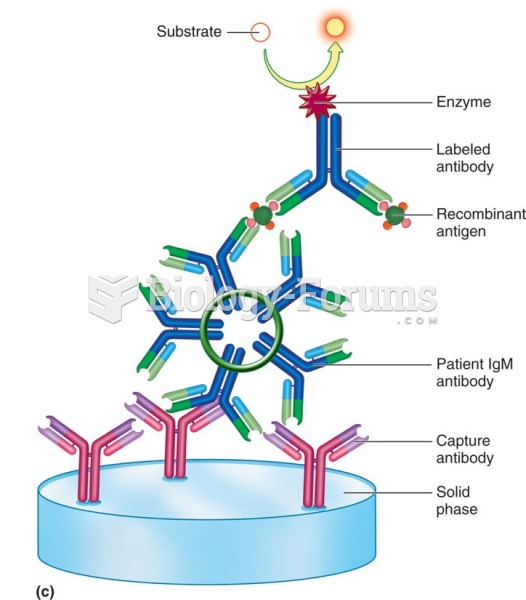|
|
|
A headache when you wake up in the morning is indicative of sinusitis. Other symptoms of sinusitis can include fever, weakness, tiredness, a cough that may be more severe at night, and a runny nose or nasal congestion.
Between 1999 and 2012, American adults with high total cholesterol decreased from 18.3% to 12.9%
The first oncogene was discovered in 1970 and was termed SRC (pronounced "SARK").
Glaucoma is a leading cause of blindness. As of yet, there is no cure. Everyone is at risk, and there may be no warning signs. It is six to eight times more common in African Americans than in whites. The best and most effective way to detect glaucoma is to receive a dilated eye examination.
Egg cells are about the size of a grain of sand. They are formed inside of a female's ovaries before she is even born.







